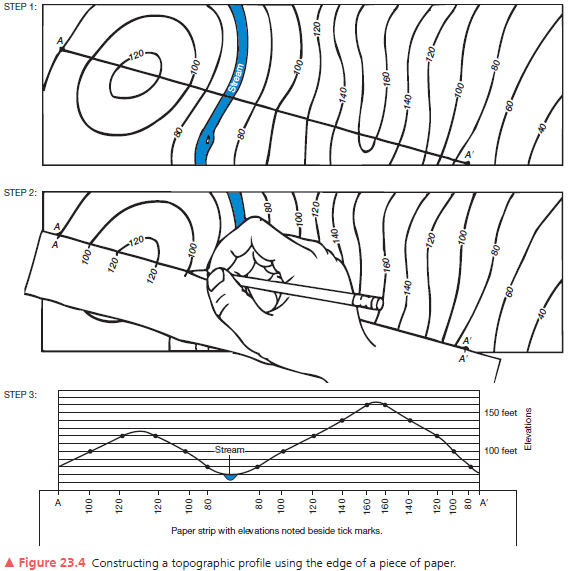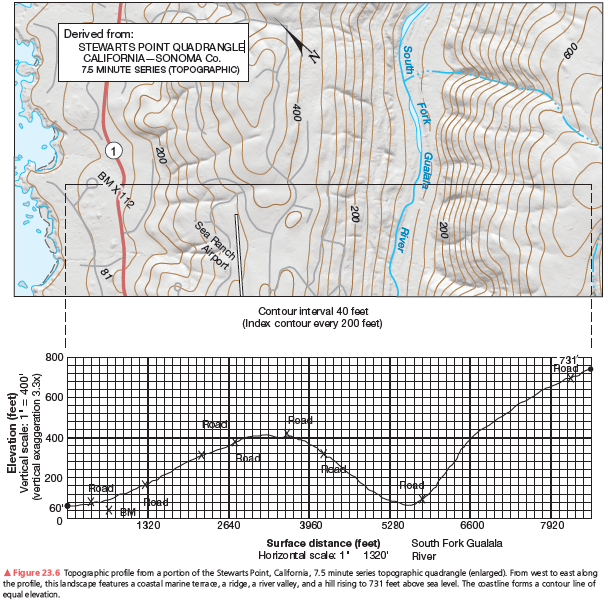In July 1863, Union and Confederate forces fought in a three-day battle at Gettysburg, Pennsylvania. The Confederate position was on Seminary Ridge, an igneous dike. The Union position was on Cemetery Ridge, an igneous sill
Using what you know about the history of the battle, interpret how the geology of the battlefield aided the Union victory.
What will be an ideal response?
Answer: Cemetery Ridge is composed of a dense, resistant basaltic material, so resistant that even though it is geologically older than the dike at Seminary Ridge, it stands higher and steeper in relief. This made it very, very difficult for Confederates to storm, particularly under fire and weighed down with gear. The steepness also made firing uphill accurately difficult for the Confederates. Finally, the basaltic material was so resistant to weathering that some units (particularly those on Little Round Top) built breastworks out of smaller chunks of the material. Reports from soldiers indicate that the lead bullets bounced off the dense rock of the breastworks.
You might also like to view...
What is the length of this topographic profile in miles? in kilometers?
A second example of a vertical profile is in Figure 23.6. Using the same procedure as you did on the previous assignment, construct a topographic profile. Label the South Fork of the Gualala River (see Figure 23.4, Step 3), the bench mark at 112 feet, and various road crossings on your profile. The coastline forms a contour line of equal elevation—sea level. Note the change in contour interval and scale from that of Figure 23.5. Use Figure 23.6 to answer further questions about preparing a topographic profile.



The stars Procyon and Betelgeuse both appear equally bright to Earthbound viewers. Yet Betelgeuse emits 5000 times more light than Procyon. Why do they appear to be equally bright?
A) because Betelgeuse is much farther than Procyon B) because Betelgeuse is undergoing fission, not fusion C) because Betelgeuse lies in the same plane of Earth's orbit D) because Procyon is superhot
The atmospheric circulation cells in the tropics are ____ cells and those in the mid-latitudes are ____ cells
a. Hadley; polar b. Ferrel; polar c. Ferrel; Hadley d. Hadley; Ferrel e. equatorial; subtropical
The precautionary principle, the polluter pays principle, and the equity principle are all reflections of
A) sound science. B) sustainability. C) adaptation. D) stewardship.